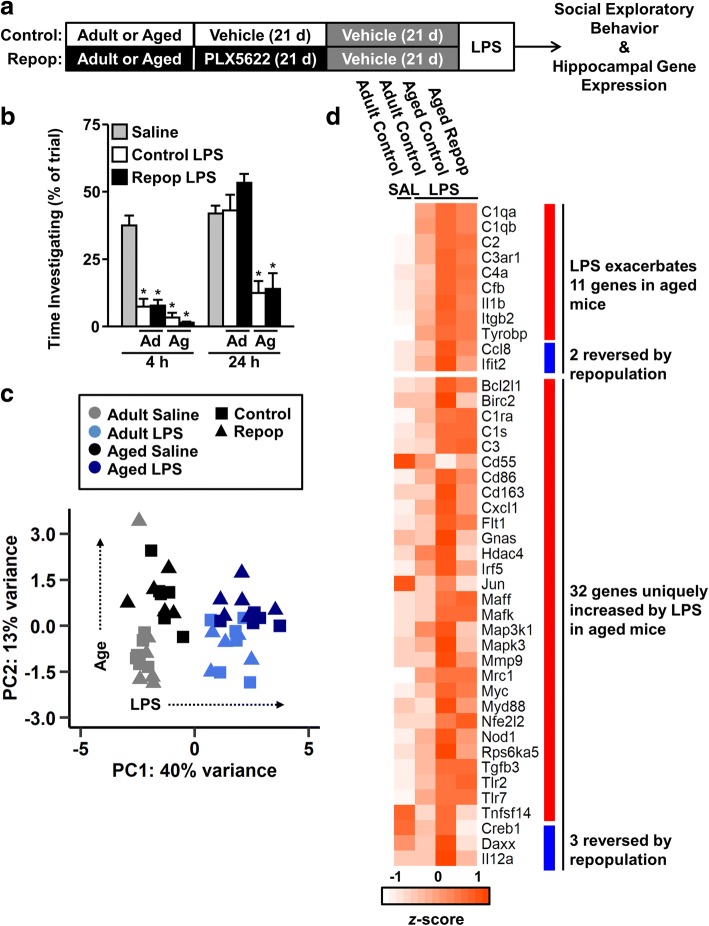Fig. 6.
LPS-induced sickness behavior was prolonged in aged mice and unaffected by microglial depletion and repopulation. a Adult (6–8 weeks old) and aged (16–18 months old) male BALB/c mice were provided diets formulated with vehicle or CSF1R antagonist (PLX5622) for 21 d. After 21 d, all mice were provided vehicle diet for an additional 21 d to allow for repopulation of microglia (Repop). After 21 d of repopulation, mice were injected with a single dose of i.p. saline or LPS (0.33 mg/kg). b Time spent interacting with a novel juvenile mouse 4 and 24 h after LPS or saline administration (n = 5–10 mice / group). At 24 h after LPS injection, the hippocampus was microdissected and RNA isolated. NanoString nCounter analysis was used to determine copy number of 248 inflammation-related genes. c PCA plot showing unsupervised clustering of groups by LPS (PC1) and age (PC2). d Heat map shows average expression of genes differentially expressed between saline-injected Adult Controls and LPS-injected Adult Control, Aged Control, and Aged Repopulation groups. Top cluster reflects genes exacerbated by LPS in aged mice. Bottom cluster reflects genes uniquely increased by LPS in aged mice. Blue annotation highlights genes in which LPS-associated increases were prevented in Aged Repopulation mice (n = 5–6 mice/group). Bars represent the mean ± SEM. Means with * are different from Saline (P < 0.05)

